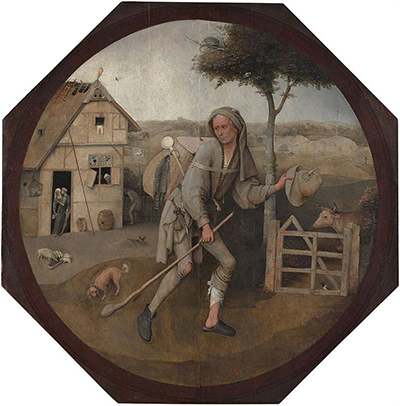 Buy Art Prints Now
Buy Art Prints Nowfrom Amazon
* As an Amazon Associate, and partner with Google Adsense and Ezoic, I earn from qualifying purchases.
The Wayfarer is an oil on panel which can now be found at the Museum Boijmans Van Beuningen in Rotterdam
This round painting has a diameter of 71,5 cm and is just one element of a great selection of Hieronymus Bosch drawings and paintings to be found at this prestigious venue. There is a date attributed to this artwork of circa 1500, with most of this artist's career proving a challenge to date with any great confidence.
Hieronymus Bosch enjoyed depicting the lives of ordinary folk at a time when most prestigious artists across Europe would be focusing on attracting the attention of the rich and famous, be it royalty, merchants or other successful businessmen. Well paid commissions were the secret to financing your career, also offering the financial stability to take on some personal projects too.
An obvious comparison can be drawn between Bosch and another significant name in and around the Northern Renaissance, that of Pieter Bruegel the Elder. He produced multiple depictions of peasant life, including weddings and dance scenes. There was also Van Gogh's Potato Eaters too.
Art serves a dual purpose of delighting the eyes but also, in some cases, helping to teach us about times long since past. The Wayfarer, for example, explains visually how the Dutch peasants of this time would interact with the landscape around them. Everything from clothing, architecture, food and drink, family relationships and much more besides are touched upon within artworks such as these.
A wayfarer featured previously in his Haywain triptych and he further develops the figure in this individual piece. There is also a further example of his skills within landscape painting, although he would always use this as a background feature. There is plenty of detail to enjoy in this round artwork, with animals dotted around the scene, a ruinous tavern and several others figures who underlined the narrative of poverty and bad behaviour.




